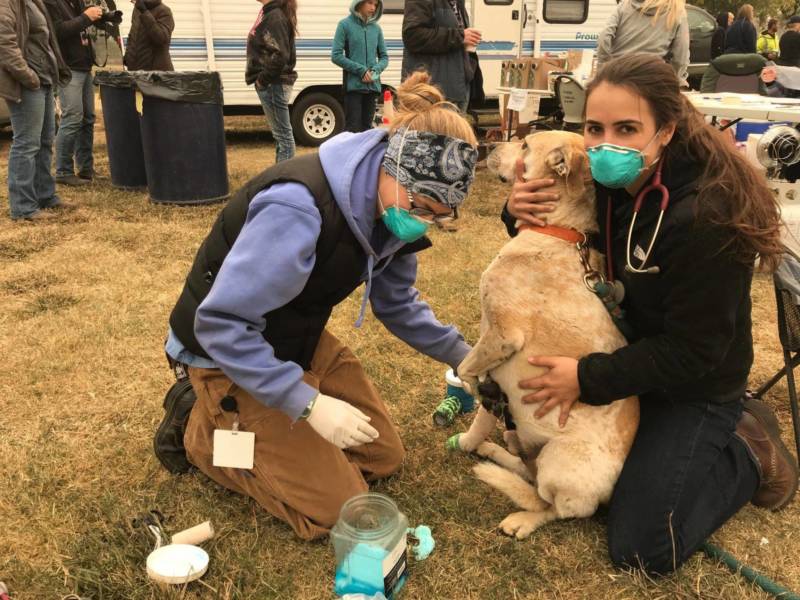This story is no longer being updated. Please visit kqed.org/wildfires for our latest wildfire-related stories and guides.
Smoke from the deadly Camp Fire in Butte County continues to pour into the Bay Area, with a Spare the Air Alert extended until at least the end of the week. In response, the California Department of Public Health recommends the public wear particulate respirator masks labeled N95 or P100 to protect against polluted air.
These masks are used widely outside our current poor-air-quality recommendations, from medical to industrial to consumer settings. So, what are these masks and how are they protecting us?
Particulate respirator masks cover your nose and mouth, providing a physical barrier between you and the polluted air. A mask labeled N95 filters out at least 95 percent of the airborne particles. A P100 filters out at least 99.7 percent. The National Institute for Occupational Safety and Health tests and approves the filters.
The filters are made of fine strands of plastic blown onto a screen. This creates a complex netting. Manufacturers then take these filters of fine plastic fibers and form them into masks, said Jeffrey Birkner, vice president of technical services at Moldex-Metric, a company that makes respirator masks mostly for industrial use.
The netting creates a physical barrier, catching particles as they try to fly through. The N95 and P100 respirators can catch particles as small as 0.3 microns wide — particles far too small for the eye to see. For reference, red blood cells are 7 to 8 microns wide.
Their ability to filter out fine particles from poor-quality air is important because wildfire smoke contains particles of just the right size that can irritate the respiratory system and worsen chronic heart and lung diseases.

